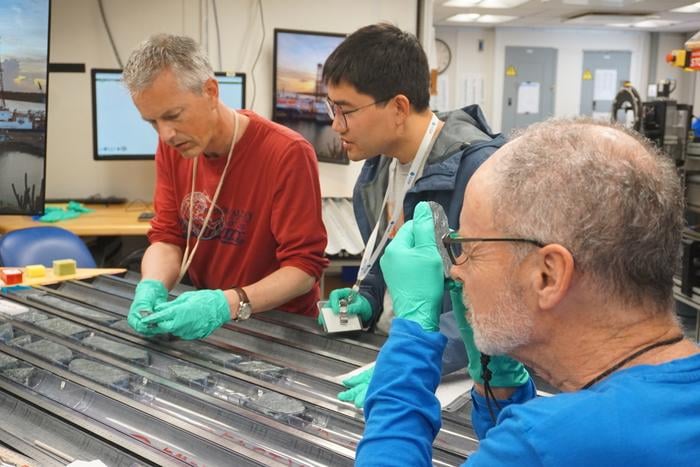Scientists have achieved a milestone in Earth science by recovering the first long section of rocks originating from the Earth’s mantle. This unprecedented achievement could unlock secrets about our planet’s history, including the origins of life and the driving forces behind volcanic activity and global elemental cycles.
A Window into Earth’s Interior
An international team of researchers recovered a nearly continuous 1,268-meter section of mantle rock from a “tectonic window” along the Mid-Atlantic Ridge. This feat, accomplished during Expedition 399 of the ocean drilling vessel JOIDES Resolution in Spring 2023, marks a significant breakthrough in the field of Earth sciences.
Professor Johan Lissenberg from Cardiff University’s School of Earth and Environmental Sciences, the lead author of the study published in Science, emphasized the importance of this discovery: “When we recovered the rocks last year, it was a major achievement in the history of the Earth sciences, but, more than that, its value is in what the cores of mantle rocks could tell us about the makeup and evolution of our planet.”
The recovered rocks offer a unique opportunity to study the composition and structure of the mantle, Earth’s largest component that lies beneath the crust. Initial analysis has already revealed surprising findings that challenge existing theories about mantle composition and behavior.
Unexpected Discoveries and Implications
The research team’s preliminary analysis uncovered unexpected characteristics in the mantle rocks. Professor Lissenberg noted, “Our results differ from what we expected. There is a lot less of the mineral pyroxene in the rocks, and the rocks have got very high concentrations of magnesium, both of which results from much higher amounts of melting than what we would have predicted.”
These findings could have significant implications for our understanding of magma formation and volcanic activity, particularly in oceanic environments. The researchers identified channels through which melt was transported through the mantle, providing insights into how magma feeds volcanoes on the ocean floor, which account for the majority of Earth’s volcanism.
Additionally, the study sheds light on how olivine, a common mineral in mantle rocks, reacts with seawater to produce hydrogen and other molecules that could potentially fuel life. This process may have played a crucial role in the origin of life on Earth.
Why it matters: This groundbreaking recovery of mantle rocks offers scientists an unprecedented opportunity to study Earth’s interior directly. The findings could revolutionize our understanding of various geological processes, including:
1. The formation and evolution of Earth’s crust and mantle
2. The mechanisms driving volcanic activity, especially in oceanic settings
3. The global cycles of important elements such as carbon and hydrogen
4. The potential role of mantle-derived materials in the origins of life on Earth
Dr. Susan Q Lang from the Woods Hole Oceanographic Institution highlighted the relevance of these rocks to early Earth conditions: “The rocks that were present on early Earth bear a closer resemblance to those we retrieved during this expedition than the more common rocks that make up our continents today. Analysing them gives us a critical view into the chemical and physical environments that would have been present early in Earth’s history.”
As research continues on these valuable samples, scientists expect to gain further insights into Earth’s history and processes. The international team of more than 30 scientists involved in the expedition will continue their work, addressing a wide range of questions in disciplines including mantle melting processes, rock-ocean chemical exchanges, organic geochemistry, and microbiology.
This achievement not only marks a significant milestone in Earth sciences but also serves as an example of successful international scientific collaboration. As Dr. Andrew McCaig from the University of Leeds noted, the expedition’s data will be fully available, setting a standard for how international science should be conducted.
If our reporting has informed or inspired you, please consider making a donation. Every contribution, no matter the size, empowers us to continue delivering accurate, engaging, and trustworthy science and medical news. Independent journalism requires time, effort, and resources—your support ensures we can keep uncovering the stories that matter most to you.
Join us in making knowledge accessible and impactful. Thank you for standing with us!

